No products in the cart.
Puppy Adoption
Goldendoodle Coat Colors – Everything You Need To Know
Last updated on May 26, 2021
By Eric Schlabach
Puppy Adoption
Last updated on May 26, 2021
By Eric Schlabach
Ever ask yourself what makes that delightful variety of colors in Goldendoodles? Or -What's the most popular color? Or - Are there certain color types more prone to genetic diseases than others? Dive into this informative article to find out!
More...

Good question! Coat colors are determined by the gene pool passed on from the puppy's parents.
As this excellent article describes, every dog color starts with only Two basic color "building blocks" better known as pigments: Eumelanin (black) and Phaeomelanin (red).
Despite the vast variety of colors Goldendoodles come in, all different variations in their coloring are created by or derived from these two pigments, both forms of melanin, the genes that determine skin and hair color. .
All different Goldendoodle colors start with only two basic pigments, known scientifically as Eumelanin (black) and Phaeomelanin (red), both a form of melanin, the genes that determine skin and hair color.
As we have learned so far, the basic two pigments that exist in the doggy gene pool are what determines the color of your Doodle puppy.
But wait - there's more! Along with those two basic pigments, are other genes that then further modify or "instruct" the coloring into creating the huge variety of lovely Goldendoodle colors we enjoy every day.
Below are some of the most common coat colors you may encounter in Goldendoodles.
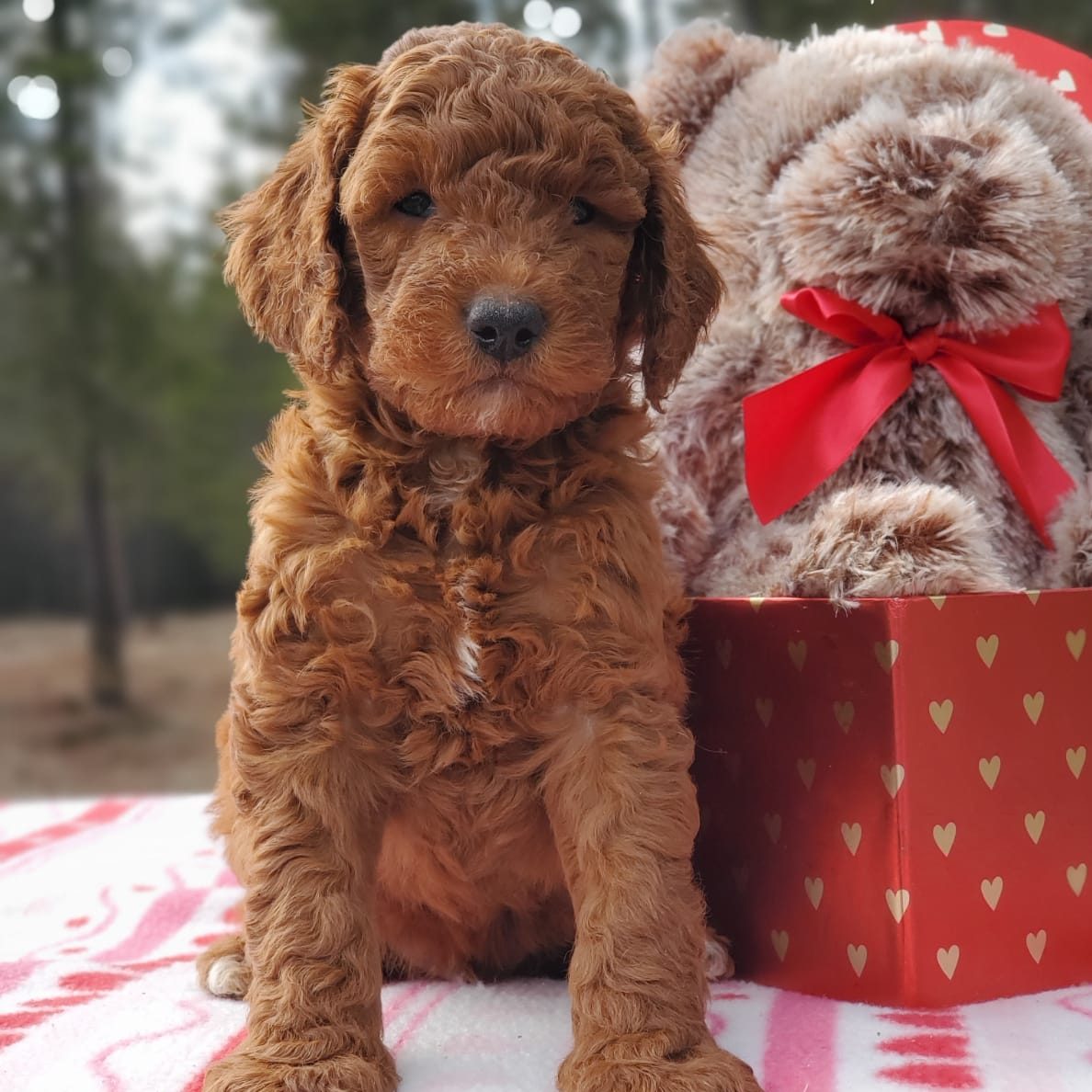
Definitely the winner of the "most common colors"! Red Goldendoodles can vary from light golden-red, to a deep, dark, reddish brown - hearkening back to their Golden Retriever gene pool.

Another of our common colors. Apricot Goldendoodles range from light peach to a rich golden.

Beautiful Cream puppies can appear almost pure white, and frequently sport contrasting markings for a truly unique 'Doodle.
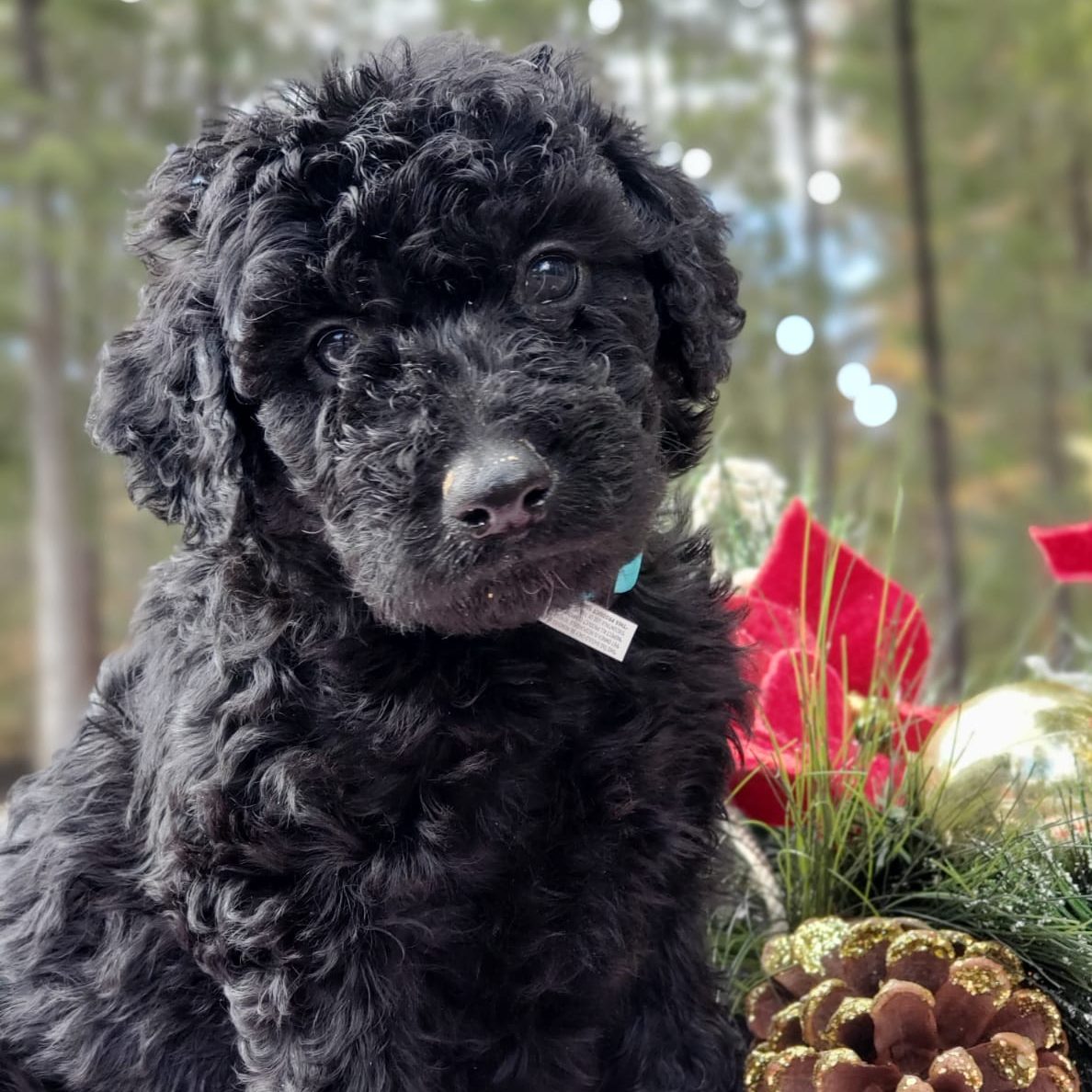
Pure Black Goldendoodles are somewhat less common, but no less beautiful. Owning one is to own a very striking dog indeed.
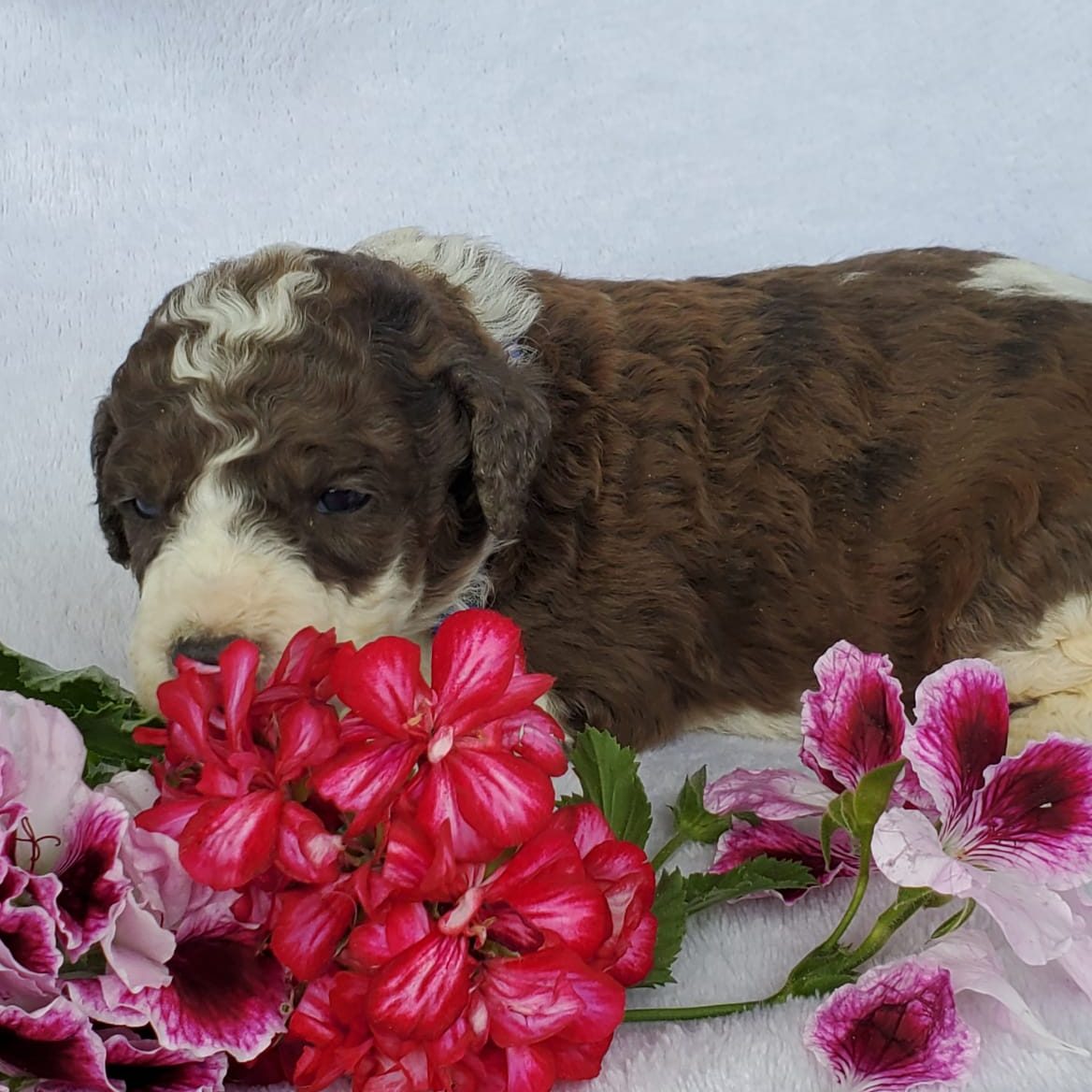
Liver or Chocolate Goldendoodles start where Red ones end. They have a deep chocolate brown coat that can fade almost into black.
So there you have it - the most common coat colors of Goldendoodles.
But wait - there's more!
Besides their common colors, Goldendoodles often have an additional variety of different markings and color patterns in their coats.
Names such as "Parti", "Tuxedo", and "Abstract" are common names for describing the various color patterns.
So with out further ado, we present our guide to Goldendoodle Color Variations!
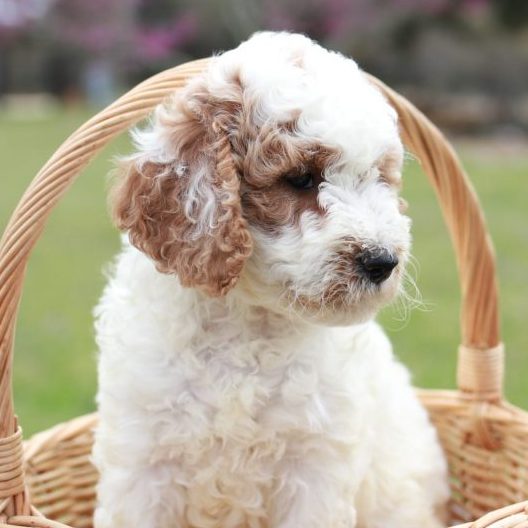
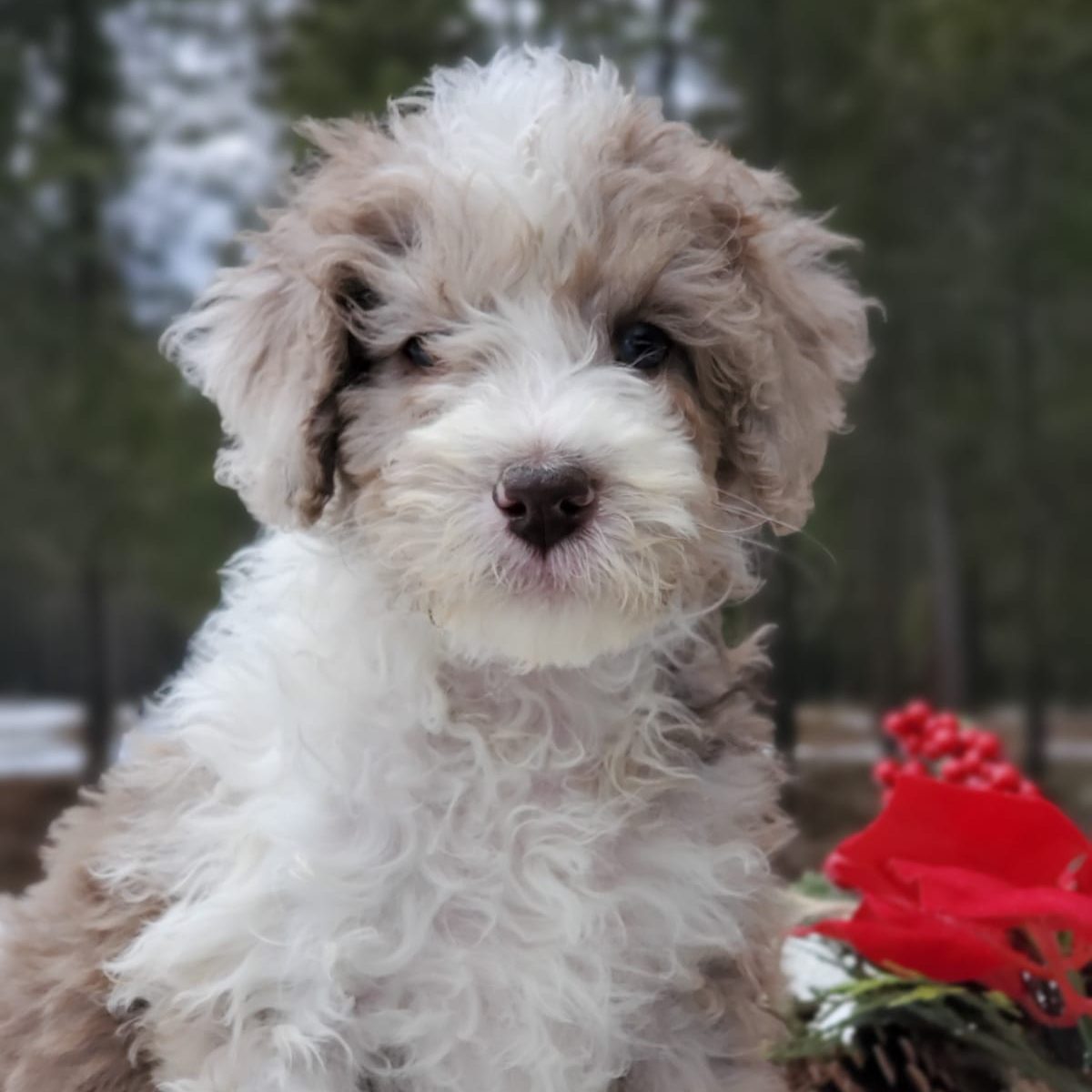
Parti Goldendoodles are defined by at least 50% white coloring, coupled with a different, secondary color in various patterns across their body. Parti 'Doodles are especially unique because no two are alike. Such fun!

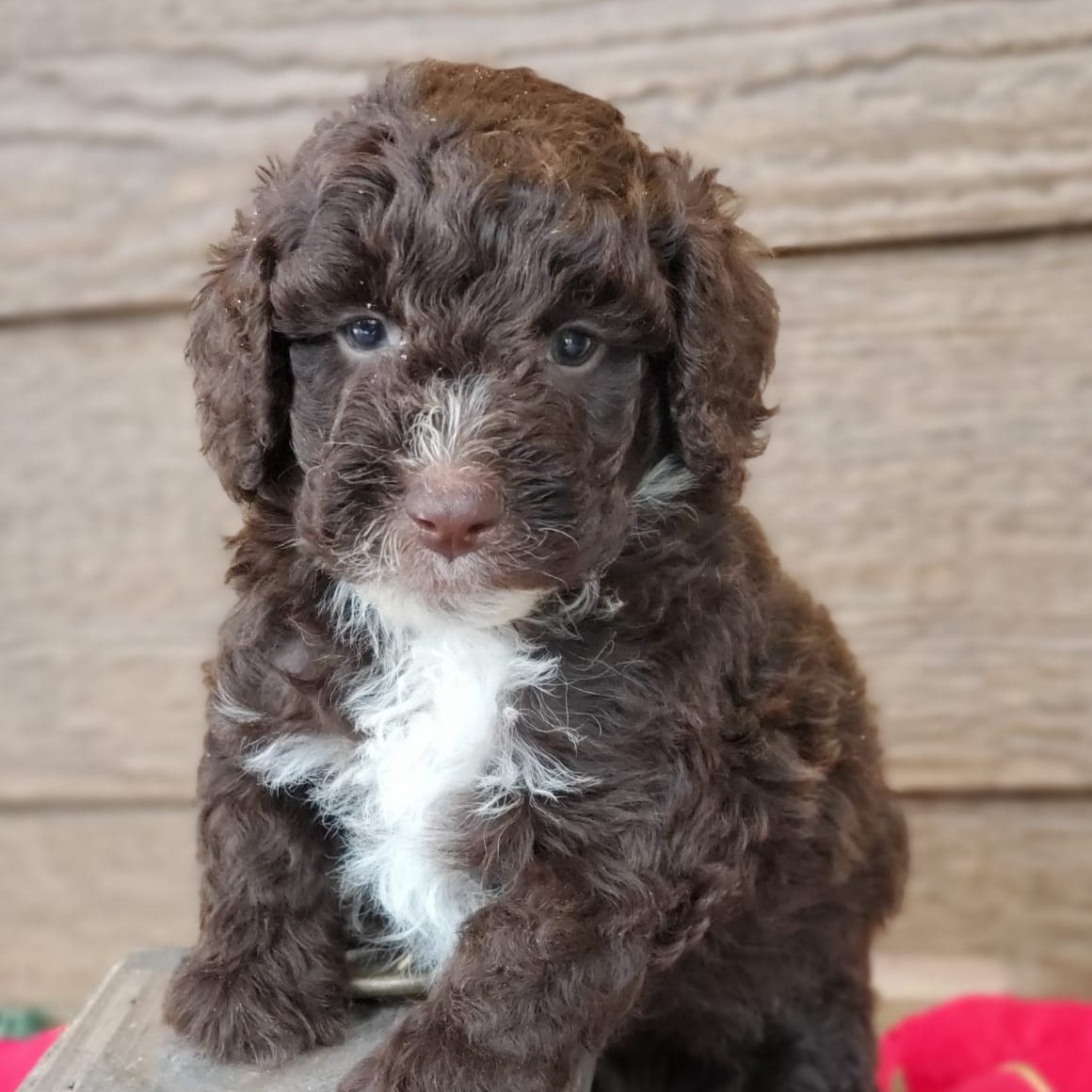
Perhaps the most common color variation in Goldendoodles, Abstract color is defined by a solid primary color, with splashes of white, most often seen across their chest, legs, face, and other extremities. (tail, toes).
What's the difference between Parti and Abstract? Parti Goldendoodles are white dogs with at least 50% white on their coat. Abstract Goldendoodles are any of the common colors other than White/Cream with Less than 50% white markings.
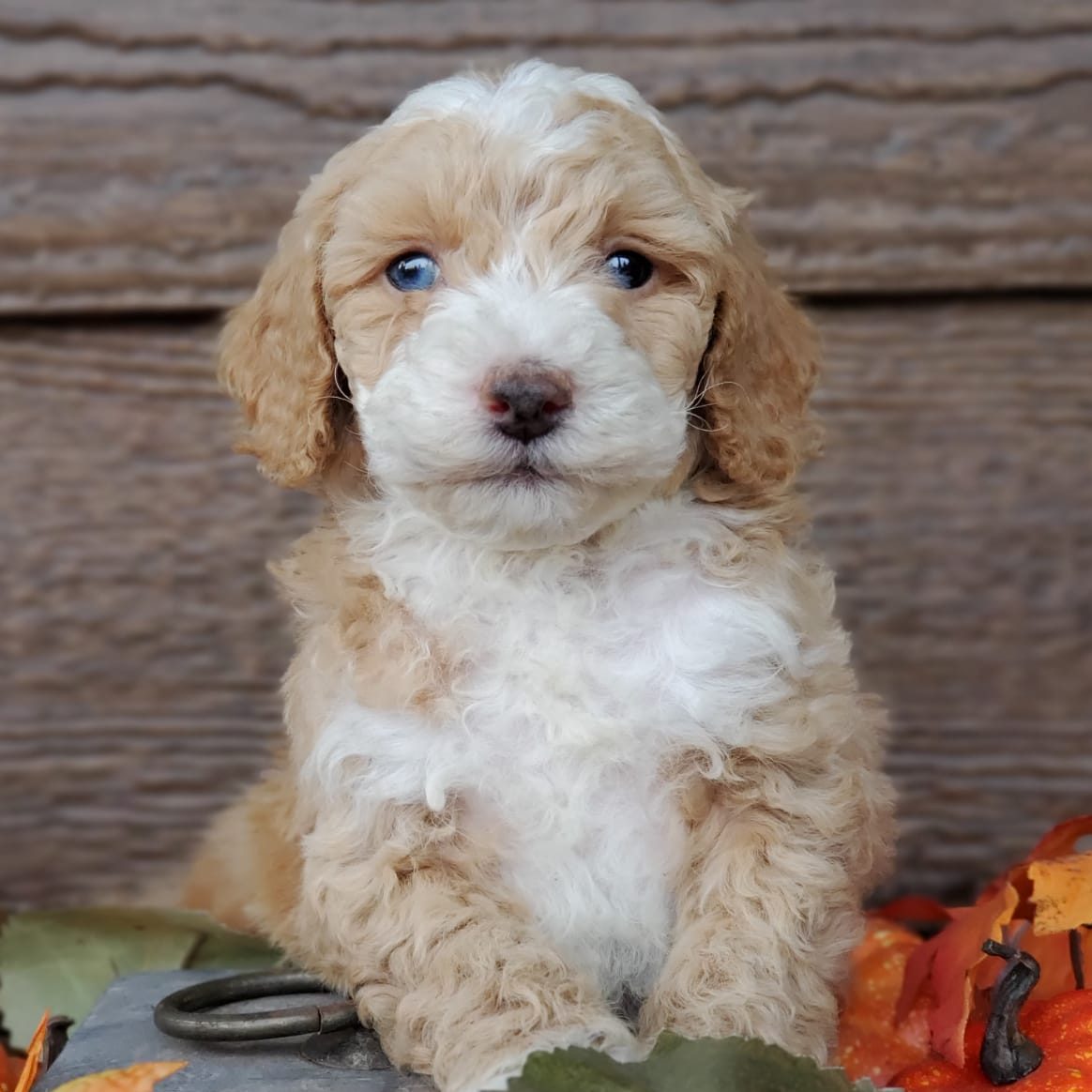

Tuxedo Goldendoodles look like they're wearing - well - a tuxedo! They are defined by a solid white chest, and underbelly that typically extends all the way from their chin to their back legs and often extending down their legs too.
Meanwhile their "topside" is set off with a darker, contrasting color to create the beautiful "tuxedo" appearance this variation is named for!
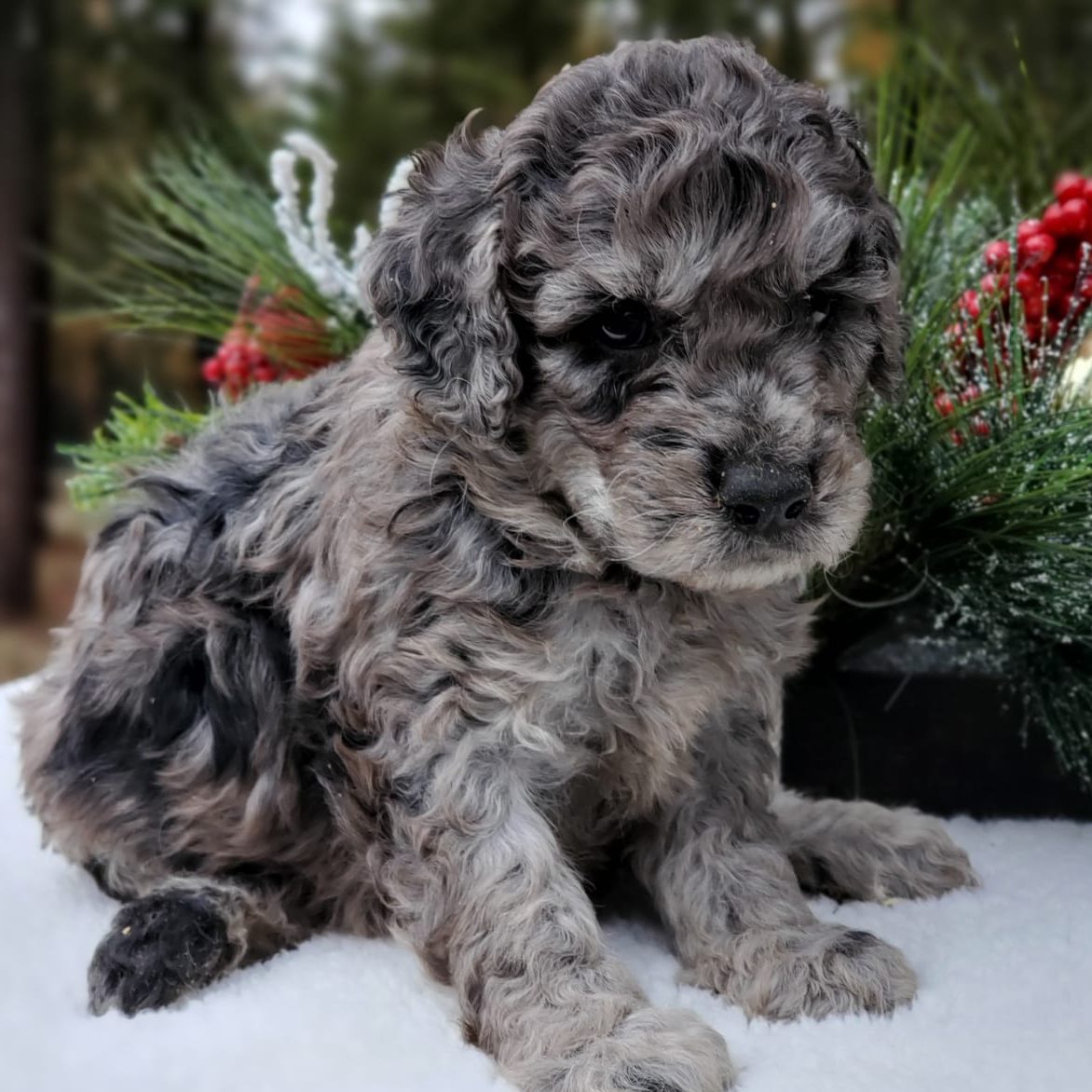

Highly sought after, due to their unique look, Merle Goldendoodles are a relatively rare phenomenon. They have a unique "swirl pattern" coat, with a lighter base coat overlaid with swirls of darker colors.
Every Merle dog is completely unique. The genetic mutation responsible for producing Merle Goldendoodles is similar to the genes that causes albinism, and Merles can have pink noses and blue eyes.
Goldendoodle merles can come in various colors patterns, including silver merle, red merle, grey merle, chocolate merle and others. The color destination is determined by the overall "cast" or "hue" of the base coat. For example, a silver merle, has a primary base coat of whitish-silver, a red merle has a reddish-brown base coat and so on.
Are Merles more prone to health issues?
Great question! Let's address it here:
First off, with careful breeding practices, the chances of a Merle puppy having abnormal genetic health issues are very low.
The higher risk is involved when two merles are bred together, creating what's known as a "Double Merle". Because Merles have a genetic mutation that causes the colors, breeding two merle dogs together can produce puppies with very mutated genes, that in turn is linked to a higher risk of genetic health issues.
The health risks that can plague poorly bred Merles, primarily include eye and ear defects.
In summary: When carefully bred, Merle Goldendoodles have a very low additional risk of having genetic issues. We recommend talking to your Goldendoodle breeder before you adopt, and only adopt from a breeder committed to raising the highest quality puppies.
Got more questions?
Below are a few of our frequently asked questions and our answers:
Q: Are Goldendoodles easy to train?
A: Yes. Goldendoodles are well known for ease of training. Check out this article for a good place to start!
Q: What is meant by F1 & F1-B, etc when referring to Goldendoodles?
A: F1 name designations are markers for the generations. "F" is short for "Filial" a word denoting generations, and the number stands for how many generations. For example, an F1 Goldendoodle is the first generation result of breeding a Poodle with a Golden Retriever.
"B" name designations represent "Backcross". For example, F1-B Goldendoodles are produced by breeding an F1 Goldendoodle back to a pure-bred Poodle.
Q: Are Goldendoodles good with other pets?
A: Yes, they are. Goldendoodles typically bond very fast, and become best friends with all the other members of your family.
Q: Where can I find a Goldendoodle?
A: We'd be honored to help you find the perfect one. Contact us or browse our Available Puppies for more.
Love This Post? Share It!